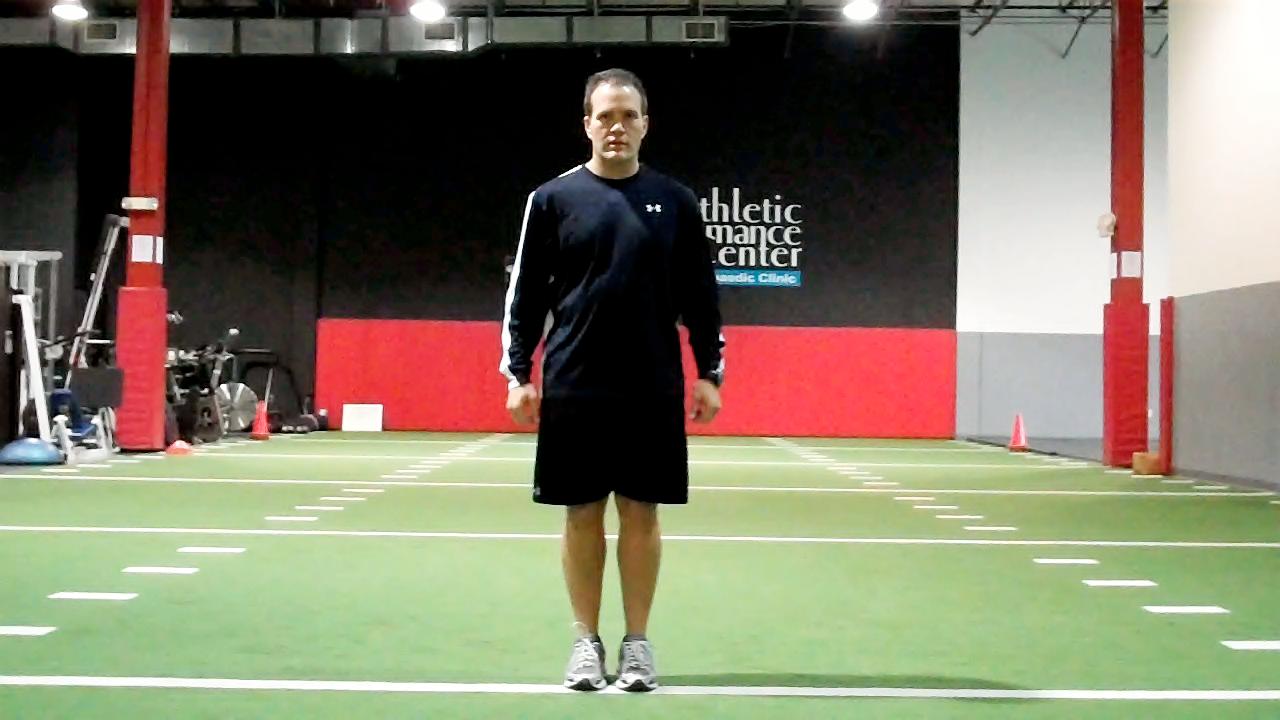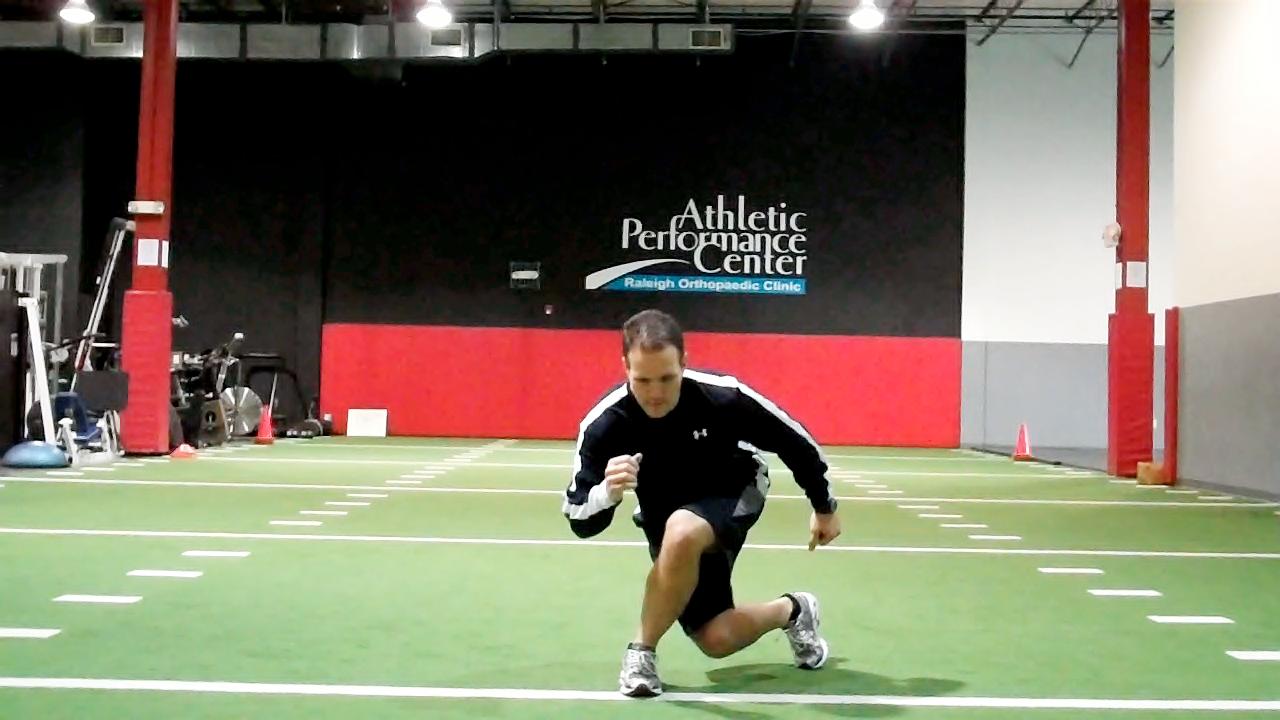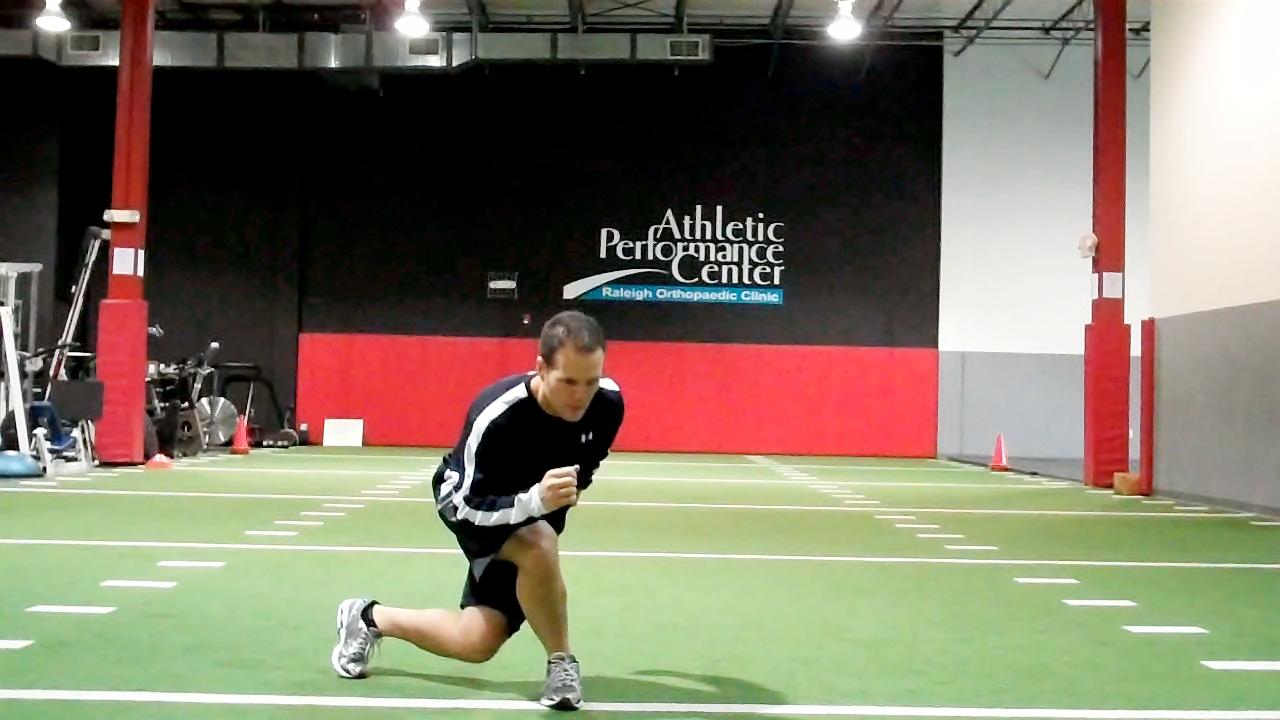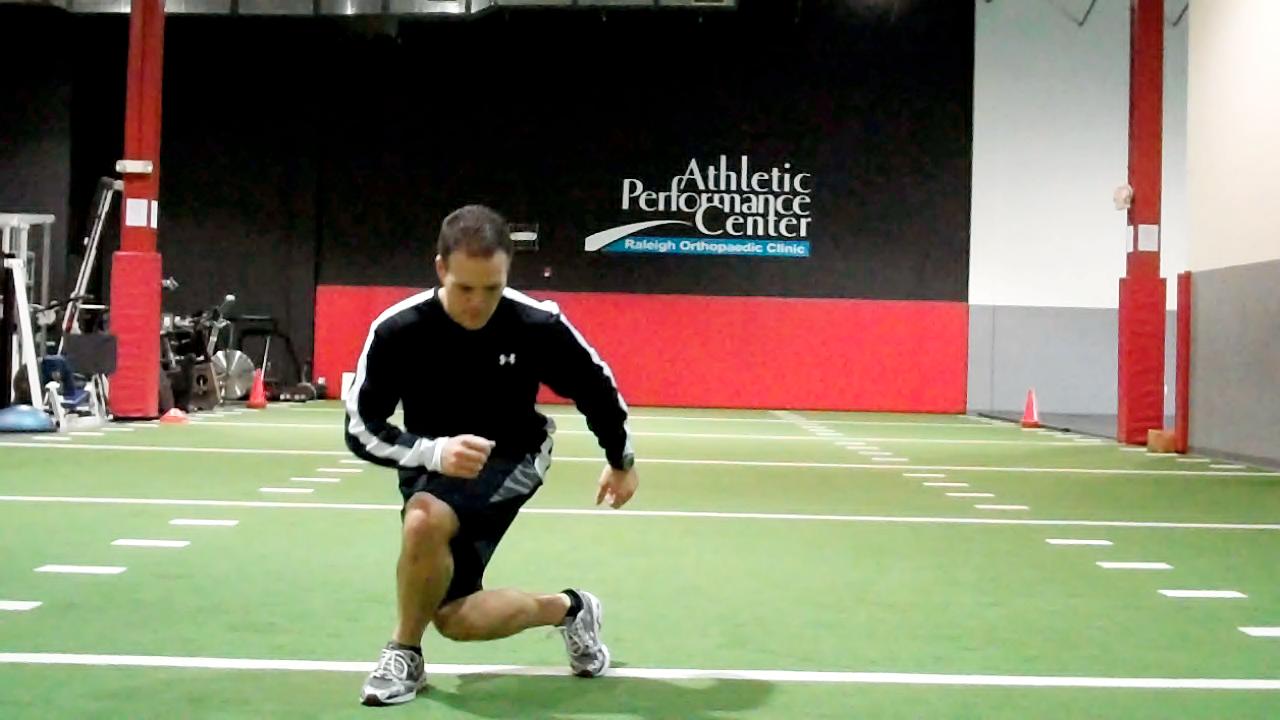
In his latest Functionally Fit, Brian demonstrates two versions of crossing lunges, both of which are good for increasing hip strength and stability.
Note: These lunges can be done moving in a forward orbackward direction. The down position for either one places the hip in asimilar position, however, I find that clients have an easier time masteringthe technique for the backward version. So, in terms of the column, I willintroduce it in this way.
See 'Related Resources' below for past Functionally Fits and other exercises and training tips.
Execution:
Backward crossing lunge
 |
 |  |
| Next, keep the left foot flat on the ground and pointing forward at all times while the right foot moves backward and left of the forward foot, dropping down into a lunge position. Pause for one to two seconds and return to the start position. | You may opt to do all repetitions on the same leg or choose to alternate legs for more proprioceptive challenge. Perform one to two sets of 10 repetitions on each side. |
Forward crossing lunge
Begin standing tallwith the feet together as before. Next, cross the right foot forward and overthe left while keeping the left foot pointing forward at all times. The heel onthe left foot will rise up and this is normal. Pause at the bottom of the lungefor one to two seconds and then return to upright.
 |  |
In the pictures, you should notice that the forward crossinglunge onto the right foot should mirror the image of the backward crossinglunge onto the left foot in the down position and vice-versa. This tip willhelp you check form on each side.
Application:
These lunges are excellent for improving hip strength andstability. Keep in mind that the backward version emphasizes closed chain hipexternal rotation, whereas the forward version emphasizes closed chain hipinternal rotation on the stationary leg. Most clients have tight externalrotators and limited internal rotation, and this may also account for theincreased difficulty in performing the forward crossing lunge effectively.
The crossing motion is very applicable to athletes ascross-over maneuvers are a staple in all field and court-based sports. Moreimportantly, improving dynamic ankle, knee and hip mobility is important andwill help reduce injury potential with pivoting and cutting activities foractive clientele.
If you wish to add difficulty to this exercise, consideradding additional load with dumbbells, medicine balls or kettlebells. In termsof precautions, I will only say that you need to coach your clients to allowthe back heel to lift with the forward crossing lunge and always allow theirbodies to move as they work to perfect the form. Due to strength andflexibility imbalances, many may not be able to maintain the proper forminitially. You may see the feet turn out, incongruent lunge steps, decreasedbalance, etc. Reducing depth will help clients get more comfortable with formand placement.
Do not force unavailable motion, but instead use deficits asan opportunity to work on segmental mobility, flexibility and joint mobility asyou train the proper movement pattern.
Brian Schiff, PT, CSCS (www.brianschiff.com) is a licensed physical therapist,respected author and fitness professional. He became a Certified Strength and ConditioningSpecialist (CSCS) in 1998. Currently, he serves as the supervisor at theAthletic Performance Center in Raleigh, NC. Brian presents nationally atseveral professional conferences and seminars on injury prevention, rehab andsport-specific training.















